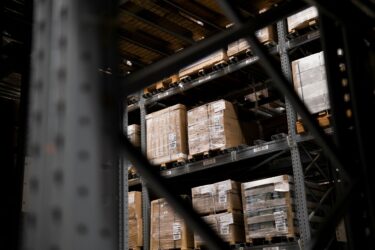
Throughout 2024, Scope 3 Supplier Engagement has been pivotal for companies aiming to meet climate targets and enhance sustainable supply chain practices. However, for many companies, supply chain emissions continue to be a blind spot. For those that have calculated their scope 3 emissions and set targets, the majority are still struggling to drive meaningful action, even as their near-term target deadlines quickly approach. These challenges emphasise the need for more cohesive supplier engagement plans.
With this in mind, we set out on a mission to help companies understand the importance of supplier engagement and its impact on climate transition, and have developed a playbook for companies to use as a guide in developing and enhancing their Supplier Engagement Program. We also developed insights on the top three key trends and the essential building blocks for a successful Scope 3 Supplier Engagement program.
Key Scope 3 Supplier Engagement Trends:
- Supplier Training & Capacity development: Companies recognize the need to support their suppliers in building climate capabilities, from emissions tracking to implementing sustainable practices. Many companies are launching training programs, shared resources, and guidance on standards to help suppliers meet climate goals.
- Supplier Data Collection: Accurate Scope 3 emissions data from suppliers is essential. Companies are investing more in tools and technologies for transparent data sharing and verification. Learn more from our recent webinar on Scope 3 Data collection and management.
- Industry Collaboration: To tackle industry-wide emissions, companies are participating in multi-stakeholder initiatives to create consistent frameworks for supplier engagement.
Looking Ahead to 2025
These trends will continue to gain traction in 2025, and companies will use lessons learned from 2024 to build on the shift towards a more collaborative, transparent, and technology-driven approach to Scope 3, allowing them to meet ambitious climate targets and create more resilient supply chains.
Next year we will delve deeper into more key focus areas that companies and suppliers will lean into to manage and mitigate Scope 3 emissions in 2025 and beyond.
These include:
- Regulatory Compliance & Reporting Alignment: With increasing regulatory requirements (e.g., the European Union’s Corporate Sustainability Reporting Directive), companies are pushing suppliers to meet compliance standards, often aligning Scope 3 reporting with these regulations to ensure consistent disclosure and to reduce compliance risks.
- Increase Transparency and Disclosure of Scope 3 Emissions: As companies begin to publicly disclose their Scope 3 emissions, they will expect the same from suppliers. This pressure for transparency reflects a broader shift toward accountability in supply chain emissions and aligns with investor and consumer expectations for corporate responsibility.
- Incentivizing Supplier Climate Action: Financial incentives are increasingly used to encourage suppliers’ climate actions, with companies offering benefits like preferred supplier status, long-term contracts, or even financial assistance for meeting sustainability benchmarks. According to CDP, suppliers are “52% more likelyto reduce their annual emissions when the buyers offered financial incentives compared to when only training was provided.
- Technology & Data driven emission reduction tools: Data and technology are critical for enabling companies to manage their scope 3 emissions. Continued advancements in this area will allow companies to model emission reductions as well as advanced analytics that will help suppliers reduce emissions practically and cost effectively.
- Climate Resilience & Adaptation: As companies feel the ongoing impacts of climate on their operations and supply chains, they now recognise the importance of asking suppliers to assess and improve their resilience to climate impacts. This includes evaluating their own raw material sourcing; enhancing their focus on resource efficiency; and adopting climate resilience measures, especially in climate-sensitive regions.
- Alignment with Circular economy principles: As companies embed circular business models principles in business strategies, they will also promote circularity in supplier processes, including product lifecycle management, recycling, and reuse initiatives. It can be beneficial for suppliers to align their operations with circular revenue models as a competitive differentiator for climate-conscious companies.
- Social & Environmental Cohesion: Companies are expanding their supplier engagement programs to include broader environmental & social impacts, like biodiversity preservation and equitable labor practices. This ensures a comprehensive approach to supply chain sustainability, reduces silos, and ensures compliance with the evolving regulatory landscape.
Through supplier engagement, companies can create a ripple effect, encouraging sustainable practices across industries, addressing the most significant sources of their emissions, and supporting systemic change that’s essential for the climate transition.
Explore our Supplier Engagement Services
Create trusted relationships across your supply chain and drive tangible business benefits through collaboration, communication, and transparency.
We are the world’s leading purpose driven, digitally enabled, science-based activator. And always welcome inquiries and partnerships to drive positive change together.





